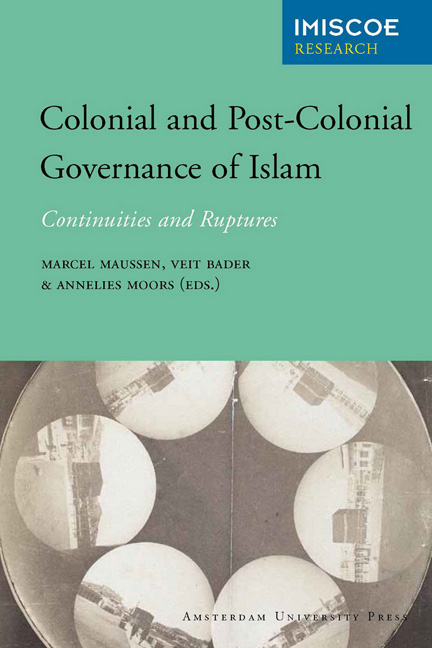7 - Colonial Traces? Islamic Dress, Gender and the Public Presence of Islam
Published online by Cambridge University Press: 05 February 2021
Summary
Controversies about Islamic dress have become commonplace in Europe since the late 1980s, with state regulations targeting both the Islamic headscarf and, later, the face veil. Such present-day attempts to regulate Islamic head coverings resonate with how Muslim women's dress has been the focus of state intervention in colonial times. In both cases, they are considered a sign, symbol or instrument of Muslim women's gender oppression and are associated with undesirable forms of Islam.
Above, I purposely employ the word ‘resonates’, an evocative rather than analytical term, because references to ‘the colonial’ are often made in this modality. In this contribution, I intend to unpack the multiple ways in which references to ‘the colonial’ may work and analyse at which moments they are helpful and when they go awry. As it turns out, tracing the genealogy of state regulation of Islamic head coverings takes us beyond colonial administrators’ discourse on women's dress to the ways in which empires and emerging nation-states regulated men's dress. The first part of this chapter traces the shift in state governance from men's dress to women's dress, looking beyond direct colonial links and conditions in order to understand how such debates have emerged and were transformed in the context of colonial settings. In the second part, I briefly address contemporary discourses in Europe that focus on women's Islamic head coverings, concluding with an attempt to trace the genealogies of such contemporary concerns.
Men's bodies: Representing the state
When tracing the genealogies of present-day debates about Islamic head coverings in Europe, we need to move beyond colonial governance in a narrow sense. In the course of the nineteenth century, the modernising empires in the Middle East started to propagate dress regulations as a means to fashion new citizen-subjects, starting with male dress. It is true that sumptuary laws have a longer history in the Ottoman Empire. Often focusing on the shapes and forms of the male turban, they served to create and maintain differences among the population, be it in rank, occupational position or religious affiliation (Norton 1997: 149-150). Nonetheless, the dress reforms that Sultan Mahmud II imposed on his subjects in the early nineteenth century were very different. His main aim was to create a modern homogeneous nation by doing away with visible distinctions between various categories of the population, including religious ones (Quataert 1997: 403, 412).
- Type
- Chapter
- Information
- Colonial and Post-Colonial Governance of IslamContinuities and Ruptures, pp. 135 - 154Publisher: Amsterdam University PressPrint publication year: 2012

